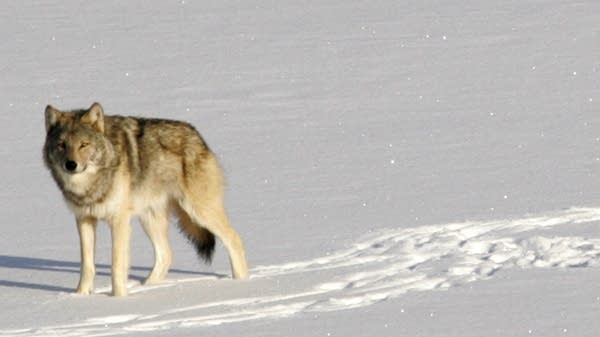Wolves to retake Isle Royale, with a little help

Go Deeper.
Create an account or log in to save stories.
Like this?
Thanks for liking this story! We have added it to a list of your favorite stories.
Twenty to 30 wolves will be introduced to Isle Royale National Park over the next three to five years to help control its booming moose population, the National Park Service said Thursday.
"The focus of this is to maintain as much wilderness character as we can ... while providing an apex predator to help the system stay as intact and resilient as possible," said Isle Royale National Park Superintendent Phyllis Green.
Moose and wolves came to the isolated Lake Superior island in the early 1900s and their populations have seesawed back and forth ever since. In 1980, there were 50 wolves on the island, but they were all descendants of one small pack. They were inbred, and their numbers have since plummeted.
Park officials in 2015 first floated the idea of bringing in wolves after the population fell to two, its lowest level in more than 50 years.
Turn Up Your Support
MPR News helps you turn down the noise and build shared understanding. Turn up your support for this public resource and keep trusted journalism accessible to all.
Without hunting pressure from wolves, moose numbers have been allowed to triple over the last decade, reaching a current population of roughly 1,500.
The decision to introduce wolves followed a lengthy environmental impact study and public comment period.
Genetically diverse wolves will be taken from the mainland around the Great Lakes region, according to Isle Royale National Park Chief of Natural Resources Mark Romanski.
"We'll be using leg hold traps and cable restraints," he said. "We're considering darting from helicopters."
Trappers will try to take full packs from regions that already have too many wolves. Romanski said he hopes to introduce eight to 10 wolves this year, which he said will have an immediate effect on the island's moose population.
Over the next 20 years, park officials say the volatile ecosystem should stabilize somewhat, with between 20 and 30 wolves.
"Moose will do what they do in the presence of wolves," Romanski said. "Their numbers will swing more, depending on winter conditions and forage."
They hope for a long-term moose average of roughly 1,100 animals.
Wolf introductions will begin this fall, after the island's tourist season. The project is expected to cost $660,000 initially, and $2 million to monitor over the next 20 years.


